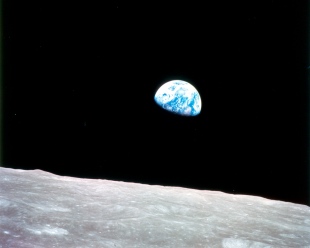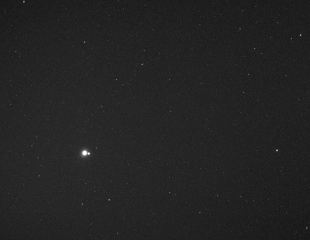
While infinity made appearances as early as Zeno, it was with Georg Cantor that the idea of many infinities of varying sizes began. In some ways this marked the taming of infinity. Its vastness, mystery, and inhuman scale no longer invoked terror or awe. Like the zero, it was something that could be represented with a symbol and manipulated in equations and algorithms.
Infinity recently made an appearance in a conversation between journalist, Om Malik and Evan Willams of Twitter:
Om Malik: Ev, when you look at the web of today, say compared to the days of Blogger, what do you see? You feel there is just too much stuff on the web these days?
Evan Williams: I totally agree. There’s too much stuff. It seems to me that almost all tools we rely on to manage information weren’t designed for a world of infinite info. They were designed as if you could consume whatever was out there that you were interested in.
Infinity takes the form of too much stuff. The web seems to have so much stuff, that finding your stuff amongst all the stuff is becoming a problem. The dilution of the web with stuff that’s not your stuff decreases the web’s value. Any random sample of the web will likely contain less and less of your stuff. This problem is expressed as an inadequacy in our tools. To effectively process infinity (big data), our tools will need to leap from the finite to the infinite. Om and Ev’s conversation continues:
Om: Do you think that the future of the Internet will involve machines thinking on our behalf
Ev: Yes, they’ll have to. But it’s a combination of machines and the crowd. Data collected from the crowd that is analyzed by machines. For us, at least, that’s the future. Facebook is already like that. YouTube is like that. Anything that has a lot of information has to be like that. People are obsessed with social but it’s not really “social.�? It’s making better decisions because of decisions of other people. It’s algorithms based on other people to help direct your attention another way.
When considering human scales, the farthest point we can apprehend is the horizon. The line that separates earth from sky provides a limit within which a sense of human finitude is defined. When the earth was conceived as flat, the horizon defined a limit beyond which there was nothing. Once the curvature of a spherical earth entered our thinking, we understood there was something — more earth — beyond the horizon. When looking from the shore to the sea, the part of the sea closest to the horizon is called “the offing.” It’s this area that would be scanned for ships, a ship in the offing would be expected to dock before the next tide. It’s in this way that we worked with things that crossed over to occupy the space just this side of the horizon.

What does it mean for an information space to leap from the finite to the infinite? There’s a sense in which this kind of infinity flattens the curvature of the earth. The horizon, as a line that separates earth from sky, disappears and the earth is transformed from world to planet. Contrary to Ev William’s formulation, there is no “world of infinite info.” Our figures become ungrounded, we see them as coordinates in an infinite grid, keywords in an infinite name space. The landscape loses its features and we become disoriented. There’s too much stuff, and I can’t seem to find mine in this universe of infinite info.

Are there tools that begin by working with the finite and evolve — step-by-step — to working with the infinite? In a sense, this is the problem of the desktop metaphor as an interface to computing. If a hard disk is of a finite size, its contents can be arranged in folders and put in drawers with various labels. Once the Network and the Cloud enter the equation, the desktop must make the leap from the finite to the infinite. Here we try to make a metaphorical transition from wooden desks in a workplace to a water world where everything is organized into streams, rivers and torrents. But in this vast ocean of information, we still aren’t equipped to find our stuff. We dip in to the stream and sample the flow from this moment to that. Our tools operate on finite segments, and the stuff we’re looking for still seems to be elsewhere.

The stuff we’re looking for is no longer contained within the human horizon. In the language of horizons, we leap from the perspective of humans to the viewpoint of the universe. Here we might talk about event, apparent and particle horizons:
The particle horizon of the observable universe is the boundary that represents the maximum distance at which events can currently be observed. For events beyond that distance, light has not had time to reach our location, even if it were emitted at the time the universe began. How the particle horizon changes with time depends on the nature of the expansion of the universe. If the expansion has certain characteristics, there are parts of the universe that will never be observable, no matter how long the observer waits for light from those regions to arrive. The boundary past which events cannot ever be observed is an event horizon, and it represents the maximum extent of the particle horizon.
There’s an interesting optimism at work in the idea that because we can create tools that work with the finite, we can create tools that work with the infinite— that somehow the principles involved would be similar. If we look at Evan William’s description of what such a tool might do, it jumps from the individual to the species. What successful adaptations have been adopted by other individuals of the species that I might mimic? The dark side of this kind of mimicry is that a successful adaptation isn’t visible in the moment. A lemming, as it approaches the edge of a cliff, may view the cues it’s receiving from other lemmings as positive and successful. Rather than create the diversity that’s the engine of evolution, it may create conformity and a fragile monoculture.

The creation of infinite info seems to parallel what Timothy Morton calls a Hyperobject. He defines such objects as being massively distributed in time and space, existing far beyond the scale of an individual human, and making themselves known by intruding into human life. Morton calls climate change, global warming and the sixth mass extinction event examples of hyperobjects. Infinite info is created, not purposefully, but like the exhaust coming out of our tail pipes. It enters the environment of the Network in geometrically increasing levels with no sign of slowing or stopping. Will it expand forever without limit, or will it behave like a super nova, eventually collapsing into a black hole?
Timothy Morton on Hyperobjects: Timothy Morton: Hyperobjects 3.0: Physical Graffiti
Now we must ask: are we creating an information environment to which we are incapable of adapting? The techno-optimists among us see human evolving to cyborg. The finite tools we used to adapt will become infinite tools that will allow us to adapt again. As Om Malik puts it, the future of the Network may include “machines thinking on our behalf.” The other side of that coin is that we’re creating something more akin to global warming. It may be that even machines thinking on our behalf will not be enough to redraw the line between the sky and the earth, re-establish the ground beneath our figures and tame the overflowing character of infinity.








